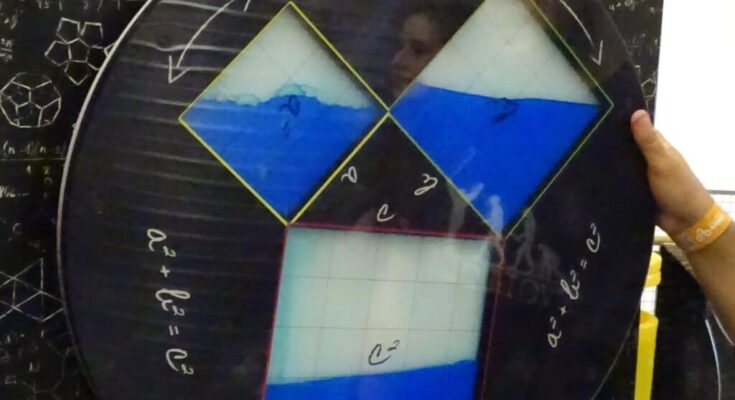
Two teenagers found ten new proofs of the Pythagorean theorem using trigonometry, debunking a century-old belief.
Calcea Johnson and Ne’Kiya Jackson were St. Mary’s Academy students in New Orleans and now attend Louisiana State University and Xavier University, respectively. Their publishing of ten trigonometric proofs of the Pythagorean theorem disproves a century-old statement from mathematician Elisha Loomis. In 1927, Loomis said in his book “The Pythagorean Proposition” that no trigonometric proof of the Pythagorean theorem could be valid.
The new Pythagorean theorem proofs
Johnson and Jackson found the trigonometric proofs for the Pythagorean theorem in High School in 2023.
In 2023, Johnson said about their discovery, “It’s an unparalleled feeling, honestly, because there’s just nothing like it, being able to do something that … people don’t think that young people can do.”
A year later, in 2024, their work was published in a paper in The American Mathematical Monthly, laying out their proofs that a century ago were thought to be impossible.
“Some people have the impression that you have to be in academia for years and years before you can actually produce some new mathematics,” said University of Connecticut mathematician Álvaro Lozano-Robledo. However, Lozano-Robledo noted that Johnson and Jackson show that “you can make a splash even as a high school student.”
Proofs in mathematics are a series of mathematical sequences that show an assertion to be true or false. The Pythagorean theorem, a2 + b2 = c2, says the square of a right triangle’s hypotenuse (the longest side) equals the sum of the squares of the triangle’s two other sides. This formula has been proven numerous times via geometric and algebraic proofs but never trigonometry.
Pythagoras was one of Ancient Greece’s premiere mathematicians. He is famous for creating the Pythagorean theorem, but he was also influential in religious and political matters. Pythagoras influenced the teachings of Aristotle and Plato.
Loomis was convinced that the Pythagorean theorem could not be proven via trigonometric means. Loomis’ reasoning for believing what Johnson and Jackson would prove nearly a century later impossible was simple. He thought that trigonometry, which deals specifically in triangles, is so integral to the Pythagorean theorem that any trigonometric proof of the formula would be circular reasoning, having first to proceed with the theorem being true.
By the time Johnson and Jackson set out to find trigonometric proofs of the Pythagorean theorem, only two were found in 2009 and 2015. Jackson said, “From there, we developed additional proofs from those early proofs.”
After presenting their new proofs in 2023, the pair set out to publish their work in a peer-reviewed journal. Publishing their findings had “proved to be the most daunting task of all” as they had to work on the project while entering university.
Johnson and Jackson said, “Learning how to code in LaTeX [a typesetting software] is not so simple when you’re also trying to write a 5-page essay with a group, and submit a data analysis for a lab.”
However, the pair overcame this adversity because getting their work out correctly was essential to them.
“It was important to me to have our proofs published to solidify that our work is correct and respectable,” said Johnson.



